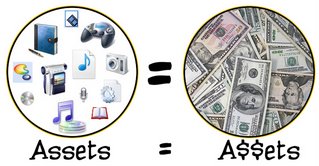10 Steps to Make Your Content a Powerful Asset

I often work with clients who are overwhelmed by their content, information and digital assets. For many individuals and companies, their content (pictures, text, video, etc) is a mess, a liability and a cost center. It takes focus and effort to turn the content from a liability into an economic asset, but the path is straight-forward and very achievable. Your organization will benefit internally and externally; creating a smother-running operation on the inside and promoting your message to the outside. You may even create additional revenue streams once you wrangle all those assets.
This is continuous publishing in a global digital media environment. Control your content before someone else does. Today much of your content is digital. And it has escaped your grasp. Below I’ll describe your ten to-do items. You’ll get control of your content and you’ll grow to understand the power and value that content will bring you.
1. Discover. Identify your existing content. What do you have? What format is it in? Perform a content inventory or content audit. Create a content matrix, a spreadsheet of all your pieces and their attributes.
2. Develop your Core. Create the essential main ingredients of your content. This is often called Single Source where a team develops base content that is used in multiple locations or formats. Crystallize your message down into the essential ingredients.
3. Prepare for Community Involvement. Your content will be captured, quoted and manipulated. Plan for it. Make your community plan. Much like a business plan, but it outlines your philosophy, approach and rules for your audience/social network. This is user-centered content creation: know your audience. Give them a voice. Give them tools like widgets or online forums.
4. Architect Your Content. Use information architecture theories and approaches. Put your content into categories that make sense. This is often called bucketing. Try doing a card sort. Your community may begin to add categories and tags to your content if you let them. This “folksonomy” approach can be powerful.
5. Create you Multi-Destinational Plan. We are in a cross-platform world. Your content will live on more than the three screens (TV, computer, mobile). Create a delivery method attribute matrix to predict where your content is most likely to land. Remember we are in the age of the globalization of content. Understand translation and localization.
6. Acquire or Build Your Tools. Content management tools will most likely be needed. Make you build vs. buy decision. Visit the CMS Matrix to get comparison information.
7. Design Your Content. Separate your content from the way it is presented. Determine the base elements of your visual brand and stick to ‘em.
8. Document it. For internal use and the retention of institutional knowledge, please document your content adventures. Develop style guides and knowledge management practices to ensure knowledge transfer to others on your team or others who may follow in the future.
9. Tell your Story Continuously. Assign, hire or rent full-time staff to constantly add new content. Generate Continuous Content. Become thought leaders. Quality content and real content wins. Don’t fill a page with keywords and call it content. Humans and machines can tell what good content is and they seek it out.
10. Track it. Define your metrics for success and document your benchmarks. Analyze your numbers. Watch them change. Modify your behavior based on results, not assumptions.
Labels: content, social networks, Todd+Tibbetts


0 Comments:
Post a Comment
Links to this post:
Create a Link
<< Home